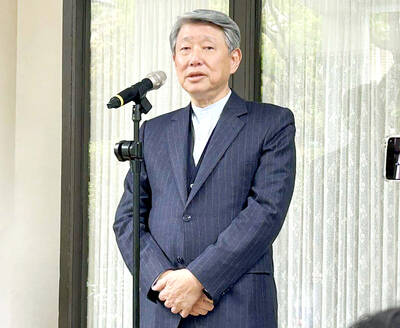Oil prices ended only moderately lower after falling sharply on Friday, as word of disappointing recovery in Gulf of Mexico oil and gas output prompted traders to cover positions.
The November crude futures contract on the New York Mercantile Exchange ended US$0.45 lower at US$62.63 a barrel, well off the intraday low of US$61.20 a barrel.
November Brent futures on London's International Petroleum Exchange closed with a loss of US$0.79 at US$59.35 a barrel.
Among petroleum products, gasoline made the most impressive recovery.
Gasoline for November delivery on the Nymex closed US$0.93 lower at US$1.7486 a gallon (3.78 liters), a sharp rebound from an intraday low of US$1.65 a gallon. November heating oil finished US$0.0469 cents lower at US$1.95 a gallon after hitting an intraday low of US$1.9025 a gallon.
Trading was light, with volumes truncated by the absence of many traders out, extending the weekend after Thursday's observance of the Jewish holiday of Yom Kippur.
The late bounce in prices came after the federal Minerals Management Service reported in a daily update a slight uptick in Gulf of Mexico oil production, putting the amount of shut-in output at about 1 million barrels a day, or 67.3 percent of total daily output, down slightly form 68.8 percent seen on Thursday.
There was virtually no improvement in natural gas output, with some 5.65 billion cubic feet (160 million cubic meters) a day of output off line, or 56.5 percent of the total, the MMS said in a daily update.
The slow pace of recovery contrasted sharply with the rapid progress Gulf Coast refiners have made in restarting hurricane-shuttered units.
"The report shows that we still have a long way to go to get back to normal," said Phil Flynn, an analyst at Alaron Trading Corp. "People are disappointed that things are not coming back online as quickly as they expected."
Reports of rising refinery output and weak demand continued to weigh on the market, however.
The federal Energy Information Administration (EIA) reported on Thursday that US refinery utilization jumped by 5.1 percentage points last week to about 75 percent of operable capacity after plunging nearly 17 percent in the aftermath of Hurricane Rita.
At the same time, gasoline demand was down 57,000 barrels a day on the week at 8.783 million barrels a day, a 1.5 percent decline on the year, the EIA said. In the four weeks ended Oct. 7, gasoline demand averaged 8.882 million barrels a day, down 2.4 percent on the year, according to the report.
Mike Fitzpatrick, an analyst at brokerage Fimat USA in New York, said weak demand has been at the forefront of the market for several weeks now.
"There is nothing new there," he told Dow Jones Newswires. "People didn't just wake up to it last night. They've been selling it for a while."

MULTIFACETED: A task force has analyzed possible scenarios and created responses to assist domestic industries in dealing with US tariffs, the economics minister said The Executive Yuan is tomorrow to announce countermeasures to US President Donald Trump’s planned reciprocal tariffs, although the details of the plan would not be made public until Monday next week, Minister of Economic Affairs J.W. Kuo (郭智輝) said yesterday. The Cabinet established an economic and trade task force in November last year to deal with US trade and tariff related issues, Kuo told reporters outside the legislature in Taipei. The task force has been analyzing and evaluating all kinds of scenarios to identify suitable responses and determine how best to assist domestic industries in managing the effects of Trump’s tariffs, he

TIGHT-LIPPED: UMC said it had no merger plans at the moment, after Nikkei Asia reported that the firm and GlobalFoundries were considering restarting merger talks United Microelectronics Corp (UMC, 聯電), the world’s No. 4 contract chipmaker, yesterday launched a new US$5 billion 12-inch chip factory in Singapore as part of its latest effort to diversify its manufacturing footprint amid growing geopolitical risks. The new factory, adjacent to UMC’s existing Singapore fab in the Pasir Res Wafer Fab Park, is scheduled to enter volume production next year, utilizing mature 22-nanometer and 28-nanometer process technologies, UMC said in a statement. The company plans to invest US$5 billion during the first phase of the new fab, which would have an installed capacity of 30,000 12-inch wafers per month, it said. The

Taiwan’s official purchasing managers’ index (PMI) last month rose 0.2 percentage points to 54.2, in a second consecutive month of expansion, thanks to front-loading demand intended to avoid potential US tariff hikes, the Chung-Hua Institution for Economic Research (CIER, 中華經濟研究院) said yesterday. While short-term demand appeared robust, uncertainties rose due to US President Donald Trump’s unpredictable trade policy, CIER president Lien Hsien-ming (連賢明) told a news conference in Taipei. Taiwan’s economy this year would be characterized by high-level fluctuations and the volatility would be wilder than most expect, Lien said Demand for electronics, particularly semiconductors, continues to benefit from US technology giants’ effort

‘SWASTICAR’: Tesla CEO Elon Musk’s close association with Donald Trump has prompted opponents to brand him a ‘Nazi’ and resulted in a dramatic drop in sales Demonstrators descended on Tesla Inc dealerships across the US, and in Europe and Canada on Saturday to protest company chief Elon Musk, who has amassed extraordinary power as a top adviser to US President Donald Trump. Waving signs with messages such as “Musk is stealing our money” and “Reclaim our country,” the protests largely took place peacefully following fiery episodes of vandalism on Tesla vehicles, dealerships and other facilities in recent weeks that US officials have denounced as terrorism. Hundreds rallied on Saturday outside the Tesla dealership in Manhattan. Some blasted Musk, the world’s richest man, while others demanded the shuttering of his